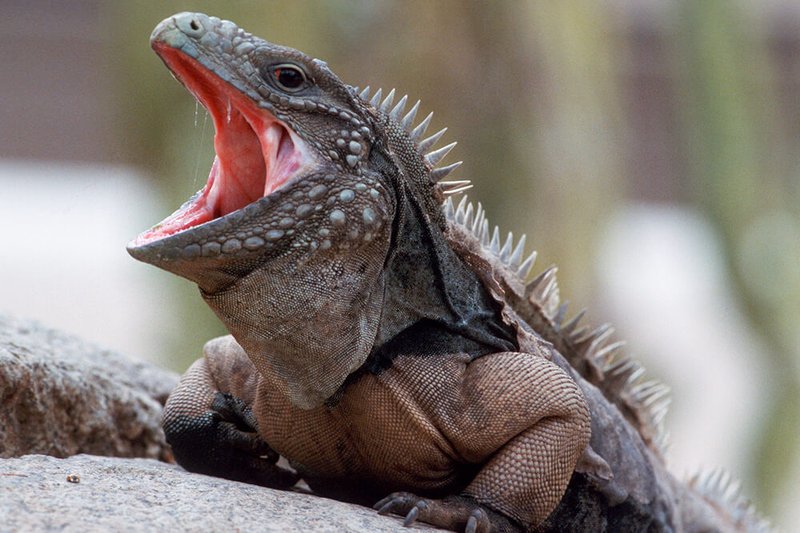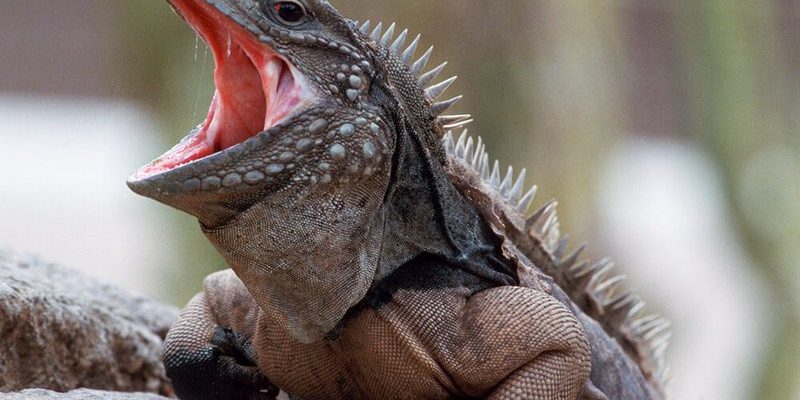
So, what exactly are some of these adaptations that make the iguana a survivor? Let’s dive in! We’ll explore how these amazing lizards have evolved over time to handle everything from predators to environmental changes. Trust me, by the end of this, you’ll not only appreciate iguanas more but might even find yourself cheering for these resilient reptiles!
Physical Adaptations: Tail as a Weapon
One of the most striking physical adaptations of iguanas is their long, whip-like tails. These tails aren’t just for show; they serve multiple purposes. First of all, they act as a powerful defense mechanism. When threatened, an iguana can whip its tail at a predator to deter them. Think of it like a built-in alarm system—when things get too close for comfort, they have a way to fight back!
Additionally, the tail plays a role in balance. Iguanas often navigate through trees and rocky terrains, and their tail helps them maintain stability as they climb or leap. Imagine trying to walk a tightrope without anything to help you balance—pretty tricky, right? That’s how important their tails are in their day-to-day survival.
Camouflage: Blending with the Environment
Another clever adaptation is their color and texture. Iguanas can often change shades to blend in with their surroundings, making it difficult for predators to spot them. This ability to camouflage is like playing hide and seek, where the iguana is a master at disappearing into the background.
Their skin texture also helps. The rough, scaly surface not only shields them from predators but also minimizes water loss in hot environments. This is particularly vital in tropical areas where they live. By staying hidden and conserving water, iguanas can thrive even in challenging conditions.
Dietary Adaptations: Herbivores with a Twist
When it comes to food, iguanas are primarily herbivores, which means they mainly eat plants. But here’s the interesting part: their digestive systems are specially adapted to help them break down tough plant fibers. Iguanas have a longer gut compared to carnivorous reptiles, allowing them to extract more nutrients from their leafy diet.
Most iguanas love munching on leaves, fruits, and flowers. But let’s not forget the importance of variety! They have evolved to eat different types of vegetation depending on what’s available in their habitats. This flexibility in diet is crucial for survival, especially when food sources fluctuate with the seasons. Imagine having a favorite restaurant—if it suddenly closed, you’d need to find a new favorite spot. That’s what iguanas do!
Digestive Bacteria: Nature’s Helpers
Here’s where things get even more interesting. Iguanas have specialized bacteria in their guts that help them digest tough plant matter. These helpful microbes break down the cellulose in plants, making it easier for iguanas to absorb nutrients. It’s as if they have tiny chefs cooking up their meals!
This unique relationship with bacteria allows iguanas to thrive on a plant-based diet that might not provide enough nutrients for other animals. By relying on both their physiology and their microbiome, iguanas are perfectly equipped to extract energy from the world around them.
Behavioral Adaptations: Sunbathing and Hiding
Iguanas are known for their love of sunshine. They often bask in the sun, soaking up UV rays that help them regulate their body temperature. This behavior is crucial because reptiles are ectothermic, meaning they rely on external sources to warm up. Picture a lizard lounging on a sunny rock, enjoying the warmth—this is how they maintain their health.
Also, iguanas are skilled at hiding. They often seek refuge in trees or crevices to avoid predators. They understand that sometimes the best defense is simply staying out of sight. This instinctive behavior helps them survive in the wild, where danger lurks at every turn.
Reproductive Adaptations: Laying Eggs and Nesting
When it comes to reproduction, iguanas have developed strategies to ensure the survival of their young. Female iguanas typically lay a dozen or more eggs in sandy or loose soil. The choice of nesting sites is crucial; they look for warm, safe areas where the eggs can develop undisturbed.
Once the eggs hatch, the baby iguanas are on their own. They are miniatures of their parents and must fend for themselves immediately. This rapid independence can be seen as an adaptation—by laying many eggs and allowing them to mature quickly, iguanas increase the chances that at least some will survive to adulthood. It’s like planting a garden, hoping that at least a few seeds will blossom into beautiful plants!
Adaptations to Threats: Speed and Agility
Iguanas are not just sitting ducks. They have some remarkable escape tactics. When they sense danger, iguanas can sprint away at surprising speeds. Their long legs and strong muscles make them agile climbers, allowing them to quickly escape into trees or shrubs. Imagine being able to leap from branch to branch, making it harder for predators to catch you!
In addition to speed, they also exhibit a behavior called “playing dead.” When frightened, some iguanas may play limp to avoid attracting attention from predators. It’s a clever survival tactic—if a predator thinks they’re not worth eating, they might move on to easier prey.
So, there you have it—iguanas are incredible survivors equipped with a range of adaptations that allow them to thrive in various environments. From their long tails and camouflaging abilities to their specialized diets and clever behaviors, iguanas showcase the wonders of evolution. They remind us that survival is not just about power; it’s about understanding how to navigate the world around you.
Next time you see an iguana basking in the sun, take a moment to appreciate the resilience and ingenuity of these remarkable reptiles. Each adaptation tells a story of survival, creativity, and adaptation in the face of challenges. Iguanas truly are a testament to nature’s ability to innovate and thrive!

